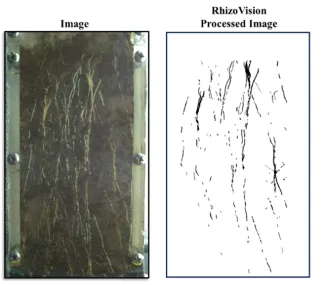We used a rhizobox experiment to simultaneously measure porewater chemistry, root growth, and greenhouse gas fluxes to better connect above- and belowground processes in thermokarst wetlands.
The Arctic is changing rapidly, and rising temperatures are causing permafrost soils to thaw and thermokarst features to form, resulting in thermokarst wetlands in depressions caused by slumping and subsequent flooding. These wetlands are often colonized by graminoids with aerenchyma that allow gas exchange between the surface and subsurface, potentially altering biogeochemical cycling in these carbon-rich ecosystems. Because thermokarst features are expected to increase with warming, it is critical to understand their effect on soil carbon storage and exchange with the atmosphere. Linking belowground root growth and associated biogeochemistry with aboveground greenhouse gas fluxes is difficult due to logistical constraints and temporal complexity. We conducted a 2-month laboratory-based mesocosm experiment in the greenhouse using soils and plants (i.e., graminoid Eriophorum vaginatum) collected from a thermokarst wetland at the Council study site on the Seward Peninsula, AK. We used transparent rhizoboxes fitted with sampling ports to concurrently sample porewater, measure greenhouse gas fluxes (CO2, CH4, N2O), and image root growth over time. Preliminary results indicate that rhizoboxes with graminoids emitted significantly more CO2 than soils alone, likely a result of added plant respiration. CH4 flux was highly variable throughout the experiment, and the mean CH4 flux tended to increase over time in the graminoid rhizoboxes, possibly a result of increased transport due to aerenchyma. In addition, we found significantly more tryptophan-like amino acids in graminoid rhizoboxes and lower overall dissolved organic carbon, possibly a result of a priming effect of newly released root exudates. We hope to better connect molecular-scale processes to root traits and aboveground greenhouse gas fluxes using this rhizobox experimental approach with root tracking features.
Contacts & email addresses: Sean Fettrow (fettrowsa@ornl.gov); Verity Salmon (salmonvg@ornl.gov)


